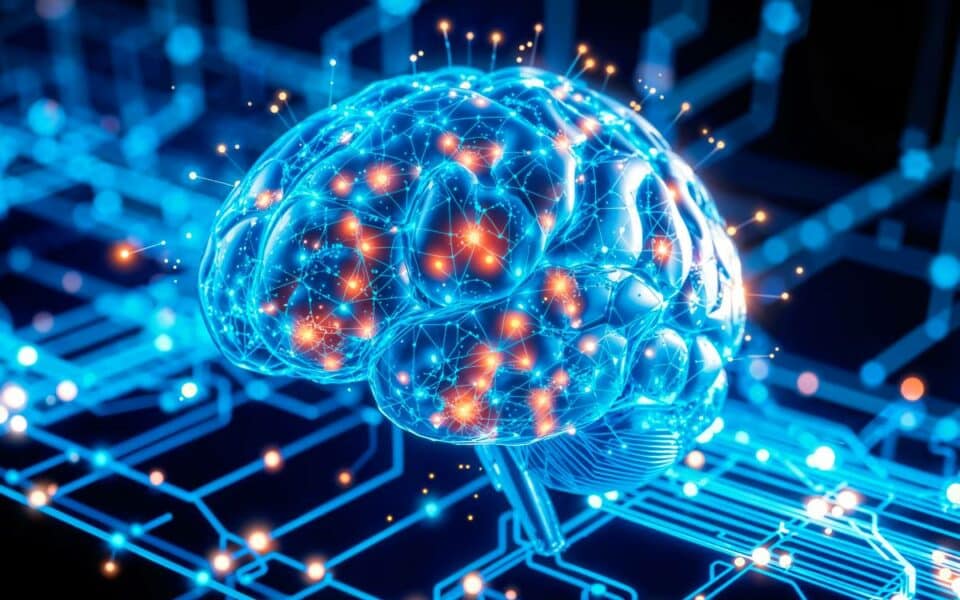
Cloud FinOps and Green IT – How to Optimize Costs and Build Sustainable Cloud Operations
30 October 2025
Introduction
For many years, artificial intelligence was synonymous with the cloud. Data collected by smartphones, sensors, and machines was sent across networks to distant data centers, where powerful servers performed heavy computations. Those centralized systems enabled enormous progress in machine learning and data analytics, but they also created a dependency: without constant connectivity, AI could not function effectively.
As the number of connected devices exploded, this model started to show its limitations. Moving massive data streams to the cloud increased latency, raised privacy concerns, and generated high operational costs. In domains like healthcare, manufacturing, and autonomous transport, even a few hundred milliseconds of delay can be unacceptable.
Edge AI emerged as a response to these constraints. Instead of treating the cloud as the only brain of AI systems, this approach pushes intelligence closer to where data originates – the “edge” of the network. Edge AI allows devices themselves to analyze, interpret, and act on data in real time, even without permanent internet access.
It’s not about replacing the cloud, but about balancing the distribution of intelligence. Computation now happens where it’s needed most: near the user, near the device, and near the action.
What is Edge AI (and what it is not)
Edge AI means running artificial intelligence models directly on edge devices – smartphones, cameras, routers, industrial controllers, and autonomous vehicles. These devices are no longer passive data collectors; they become miniaturized, intelligent computers capable of decision-making on the spot.
This local processing brings multiple benefits. By avoiding constant data transmission, Edge AI reduces network load and lowers costs associated with bandwidth. It also protects privacy, since raw, sensitive data – like medical images or security footage – doesn’t leave the device. Most importantly, it reduces latency, enabling actions in milliseconds rather than seconds.
However, Edge AI is not the opposite of cloud AI. In practice, both layers work together. The edge handles immediate decisions – detecting motion, recognizing objects, identifying anomalies – while the cloud manages long-term learning, analytics, and retraining. This hybrid model merges the speed of local inference with the scalability and intelligence of the cloud.
The Architecture Behind Edge AI
An Edge AI ecosystem consists of many moving parts, all connected by a shared goal: to bring intelligence as close as possible to data sources.
At the foundation are sensors and IoT devices – cameras, microphones, and meters – which generate the raw input. This data is then preprocessed locally to remove noise, normalize values, and detect relevant events. Clean, consistent input ensures that the AI model works efficiently and accurately.
The AI model deployed on the device is usually a smaller version of a larger cloud model. Through techniques like quantization (reducing numerical precision), pruning (removing unnecessary parameters), and distillation (compressing a large “teacher” network into a smaller “student”), engineers can fit powerful intelligence into compact hardware.
To perform inference in real time, edge devices rely on hardware accelerators – GPUs, NPUs, or dedicated AI chips. These components execute neural computations efficiently, even with low power consumption.
Above this layer sits monitoring and telemetry, responsible for tracking metrics such as latency, accuracy, and power usage. Without visibility, distributed AI systems would be nearly impossible to manage.
Finally, central orchestration – including model registries, over-the-air (OTA) updates, and security policies – keeps the entire ecosystem consistent and under control.
There are two dominant deployment patterns. In full on-device inference, all processing happens locally, ensuring full autonomy and privacy. In split inference, the workload is divided between the device and the cloud – ideal for balancing performance and complexity when models are too large to run entirely on the edge.
MLOps at the Edge: Managing the Lifecycle
Deploying a model to thousands of devices is not the end of the journey – it’s only the beginning. Over time, models drift, data changes, and devices evolve. Without structured management, performance quickly deteriorates.
MLOps at the edge extends traditional machine learning operations into a distributed, often resource-limited environment. The goal is to maintain model quality and reliability at scale.
Every model version is stored in a central registry, allowing teams to track accuracy, metadata, and compatibility across devices. When a new version is ready, it undergoes optimization and compilation – converting it into lightweight formats such as TensorFlow Lite, ONNX Runtime, or CoreML.
Rolling out updates to edge devices is done via OTA systems. A good strategy involves phased deployment – starting with a small percentage of devices, then expanding as stability is confirmed. Techniques like canary testing or shadow deployments allow organizations to test new models in real-world conditions without risking system-wide failure.
Once models are live, continuous monitoring becomes critical. Teams collect metrics on accuracy, latency, and power usage. Drift detection systems flag when the input data no longer matches the training set, signaling the need for retraining or model replacement.
Without these processes, Edge AI systems can degrade silently – delivering unreliable predictions and eroding trust.
Security, Privacy, and Compliance
Edge AI often operates in sensitive environments: hospitals, vehicles, industrial plants, and public infrastructure. The data it processes – from biometric readings to surveillance feeds – can’t be left unprotected.
Security begins with trusted execution environments (TEEs) such as Intel SGX or ARM TrustZone. These hardware-level features isolate AI workloads from other system processes, preventing tampering or data leaks.
Each deployed model is digitally signed and verified to ensure authenticity, blocking any unapproved or malicious code. Data minimization principles are also essential: instead of transmitting entire data streams, devices send compact summaries – for instance, “anomaly detected at sensor #12” instead of full video footage.
Finally, auditing and logging provide accountability. Every inference result, update, or system change can be traced and reviewed later, supporting compliance with frameworks like GDPR, HIPAA, or ISO/IEC 27001.
By combining strong security with transparent governance, organizations build user confidence while meeting regulatory obligations.
When Edge AI Pays Off: Cost and ROI
Implementing Edge AI requires investment in hardware, software, and management infrastructure – but the payoff can be substantial when the conditions are right.
It delivers the highest return when:
- Bandwidth is expensive or limited – for example, in video surveillance networks or industrial IoT systems where transferring raw footage would overwhelm the connection.
- Latency is mission-critical – autonomous vehicles, smart grids, and factory automation rely on sub-millisecond reactions that cloud latency simply cannot provide.
- Privacy is mandatory – in healthcare or finance, where regulations prevent raw data from leaving the device.
- Connectivity is intermittent – in remote mining sites, ships, or rural areas where cloud access cannot be guaranteed.
In these cases, Edge AI not only cuts cloud costs but also prevents downtime and enhances safety. A well-implemented system can lower total cost of ownership by reducing data transfer, bandwidth dependency, and energy consumptio
Synergy with the Cloud
Despite its growing independence, Edge AI does not eliminate the need for the cloud. Instead, it transforms it into a complementary layer.
The cloud remains essential for tasks that require global coordination: training large models, aggregating telemetry, and managing long-term analytics. It also serves as a repository for models and updates that edge devices periodically download.
The edge, in contrast, acts as the first line of intelligence. It filters data, performs quick analytics, and decides what information is worth sending back. This collaboration minimizes redundancy, improves scalability, and creates a balanced system where each layer contributes to performance and efficiency.
Practical Applications of Edge AI
Edge AI already powers many aspects of daily life and industry:
- In manufacturing, smart cameras inspect products on assembly lines, identifying defects instantly. Predictive maintenance algorithms running on local sensors can prevent costly equipment failures.
- In retail, stores use in-store cameras to analyze customer movement patterns and shelf stock levels, improving logistics while preserving privacy.
- In smart cities, edge-based traffic systems optimize signal timing, detect accidents, and manage congestion even when cloud connectivity is disrupted.
- In healthcare, wearable and portable devices analyze patient data locally, sending only key alerts or summaries to clinicians.
- In the energy sector, intelligent meters detect anomalies in grid performance and autonomously adjust distribution to maintain stability.
These use cases show that Edge AI is not an experiment, it’s a mature technology reshaping industries through autonomy and efficiency.
Edge AI and Large Language Models (LLMs)
As generative AI and large language models dominate the conversation, Edge AI is finding its place in this domain too. Running full-scale LLMs on local hardware is still challenging, but hybrid solutions are emerging.
Edge devices can perform lightweight tasks – detecting wake words, recognizing intent, caching embeddings – while the cloud handles complex reasoning and generation. The results are then stored locally, allowing faster responses for repeated queries.
Meanwhile, compressed and quantized LLMs are starting to run natively on modern smartphones and microcontrollers. These models, although smaller, enable offline AI assistants that protect privacy and reduce reliance on remote servers.
The future likely lies in multi-tier architectures, where local, regional, and cloud layers collaborate seamlessly.
Challenges and Common Mistakes
Adopting Edge AI is not without obstacles. Many organizations underestimate the complexity of maintaining distributed intelligence.
Common pitfalls include deploying a single oversized model across heterogeneous devices, neglecting OTA update mechanisms, ignoring thermal or power constraints, and failing to monitor real-world data quality. Each of these issues can undermine the entire system’s stability.
Another frequent problem is treating Edge AI as a one-time deployment rather than an ongoing process. Like any living system, it needs updates, retraining, and continuous supervision. Companies that recognize this early and invest in robust operational frameworks avoid costly technical debt later.
Conclusion
Edge AI represents the next logical evolution of artificial intelligence – one that mirrors the decentralization happening across all areas of technology. By moving computation closer to the user, organizations gain faster responses, stronger privacy, and reduced operational costs.
The key to success lies in balance. Edge AI should not compete with the cloud but complement it, creating a distributed system where both layers reinforce each other. With proper MLOps, security, and governance, companies can transform AI from a centralized service into a living, adaptive ecosystem.
As the world fills with billions of connected devices, Edge AI will define how intelligence operates – not in distant data centers, but in the everyday objects that surround us.


